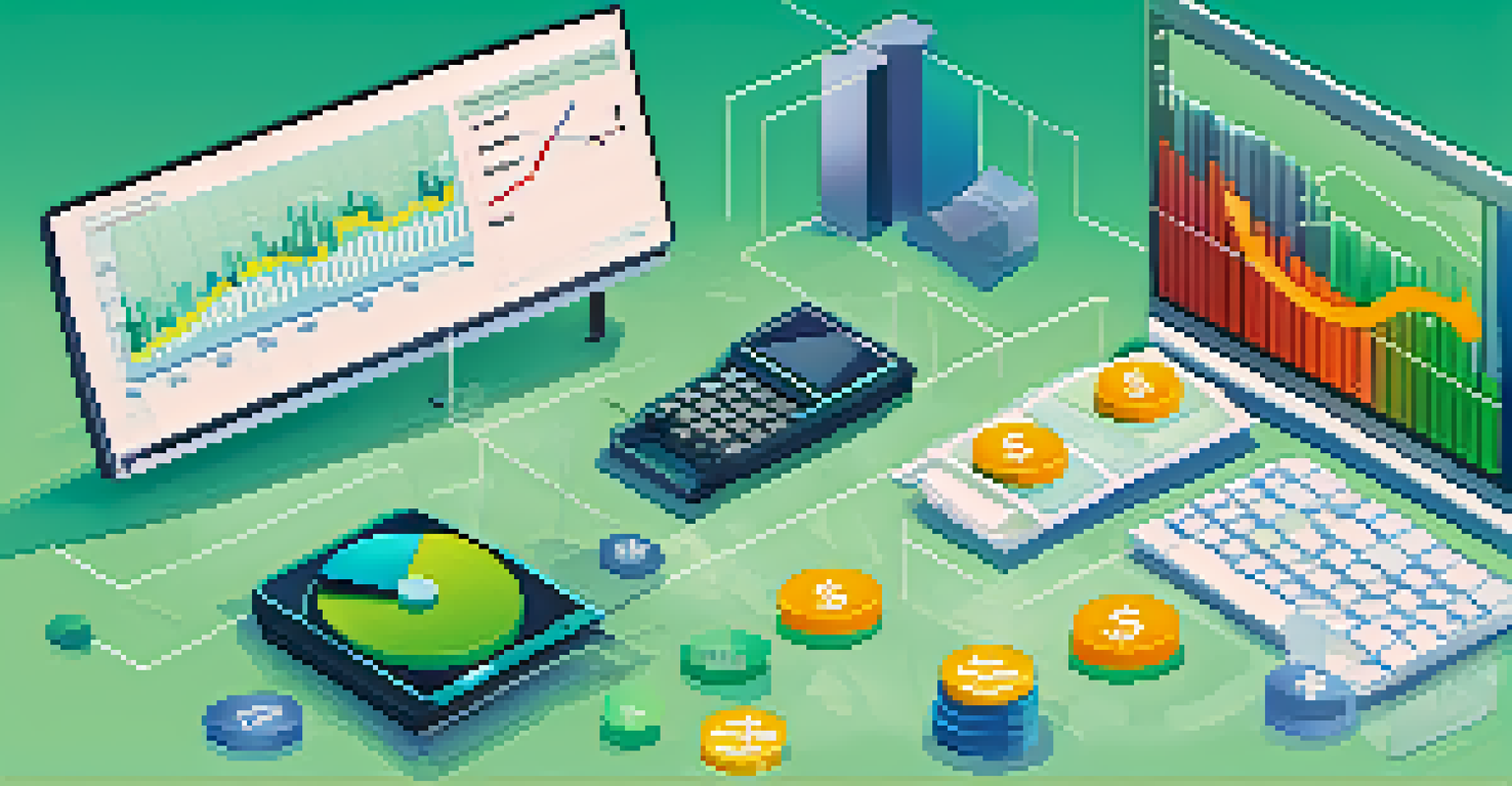How to Calculate Your Margin in Trading

What is Margin in Trading and Why It Matters
Margin in trading refers to the amount of money required to open and maintain a leveraged position. Essentially, it’s a fraction of the total trade value that you need to deposit to control a larger amount of money. Understanding margin is crucial because it allows traders to amplify their potential returns, although it comes with increased risk.
Risk comes from not knowing what you're doing.
When you trade on margin, you are borrowing funds from your broker, which means you can trade more than your actual account balance. For example, if you have $1,000 and your broker offers a 5:1 leverage, you can control a position worth $5,000. However, this amplified exposure can lead to significant losses just as easily as it can yield profits.
In summary, margin is a powerful tool in trading that can enhance your potential gains, but it’s essential to grasp the risks involved. A solid understanding of how margin works will help you make informed trading decisions and manage your capital effectively.
Understanding Margin Requirements for Different Assets
Margin requirements can vary significantly based on the type of asset you are trading. For instance, stocks typically have lower margin requirements compared to forex or futures. This is largely due to the inherent volatility and risk associated with different markets, so it’s important to consult your broker’s margin policy before diving in.

For example, a common margin requirement for stock trading is 50%, meaning you need to deposit half the total value of your trade. In contrast, forex trading often allows for much higher leverage, sometimes up to 100:1, which means you only need 1% of the trade’s value as margin. While this can lead to higher profits, it can also amplify potential losses.
Understanding Margin in Trading
Margin allows traders to control larger positions with less capital, enhancing potential returns but increasing risk.
Knowing the margin requirements for the specific assets you trade is crucial for effective risk management. By understanding these variations, you can better assess your exposure and adjust your trading strategy accordingly.
How to Calculate Margin in Trading: A Step-by-Step Guide
Calculating your margin in trading is fairly straightforward. The basic formula is: Margin = (Trade Size) x (Margin Requirement). For instance, if you want to buy $10,000 worth of stocks and your broker requires a 50% margin, you would need to set aside $5,000.
In trading and investing, what's comfortable is rarely profitable.
To break it down further, let’s say you’re trading forex with a position size of 100,000 units and your broker has a margin requirement of 1%. You would calculate your margin like this: Margin = 100,000 x 0.01, which equals $1,000. This means you need to have $1,000 in your trading account to open that position.
Once you have the margin amount calculated, you can make more informed decisions about how much you can trade without risking too much of your capital. Understanding these calculations is essential for maintaining a healthy trading account.
The Role of Leverage in Margin Trading Explained
Leverage is a concept closely tied to margin trading, allowing you to increase your market exposure beyond your actual investment. It’s essentially the ratio of the amount you’re trading to the margin you need to deposit. For example, if you have a leverage of 10:1, you can control a position worth $10,000 with just $1,000 of your own money.
While leverage can enhance profits, it also increases the risk of significant losses, making it a double-edged sword. If the market moves against you, your losses can exceed your initial margin investment, leading to a margin call from your broker. This happens when your account equity falls below the required margin level, prompting you to deposit more funds or close positions.
Leverage's Double-Edged Nature
While leverage can amplify profits, it also raises the risk of significant losses, making risk management crucial.
Understanding how leverage interacts with margin is vital for responsible trading. It allows you to balance the potential for greater returns with the need for effective risk management strategies.
What is a Margin Call and How to Avoid It
A margin call occurs when your broker requires you to deposit more funds into your account to maintain your positions. This typically happens when your account equity falls below the required maintenance margin due to adverse market movements. Receiving a margin call can be stressful, as it often means you need to act quickly to avoid automatic liquidation of your positions.
To avoid margin calls, it’s crucial to monitor your positions regularly and set appropriate stop-loss orders. These can help protect your capital by automatically closing a position if it reaches a certain loss level. Additionally, maintaining a sufficient cash balance in your trading account can provide a buffer against sudden market fluctuations.
In short, staying proactive and implementing risk management strategies can help you steer clear of margin calls. By being aware of your account status and taking preventive measures, you can trade with greater confidence.
The Benefits and Risks of Trading on Margin
Trading on margin offers several benefits, including increased potential returns and the ability to diversify your portfolio without needing a large capital outlay. For example, if you want to invest in multiple assets but only have limited funds, margin trading allows you to do so, enhancing your overall market exposure.
However, the risks associated with margin trading cannot be overlooked. The potential for amplified losses means that even small market movements can have a significant impact on your account balance. Traders must be diligent in using risk management techniques to protect themselves from these downsides.
Avoiding Margin Calls
Regularly monitoring positions and setting stop-loss orders can help prevent the stress of a margin call.
In conclusion, while trading on margin can enhance your investment opportunities, it’s essential to weigh the benefits against the risks. A balanced approach, combining strategic trades with robust risk management, can help you navigate the world of margin trading effectively.
Final Thoughts: Mastering Margin in Your Trading Journey
Mastering margin in trading is an essential skill for anyone looking to enhance their trading strategy. It involves not only understanding how to calculate margin but also recognizing the associated risks and benefits. As you become more familiar with margin trading, you’ll find that it can offer valuable opportunities for growth.
However, it’s essential to approach margin trading with caution. Always stay informed about market conditions, maintain a robust risk management strategy, and never invest more than you can afford to lose. This mindset will help you navigate the often volatile trading environment more effectively.

Ultimately, the key to successful trading lies in education and discipline. By taking the time to understand margin and its implications, you can better position yourself for long-term success in the trading world.